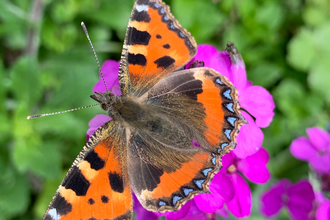Yorkshire’s second hosepipe ban in three years starts on Friday 11th July 2025, following the hottest June and the driest spring in 130 years. Our reservoirs are 26% lower than usual and our nature reserves and wildlife are beginning to see the impact of a changing climate.
Our land managers and wildlife experts have already noticed significant changes to what we’d normally see at this time of year, but it will be a year or two before we see the true impact of the unprecedented hot and dry weather on bird breeding figures and our plant seedbank.
There are already fewer dragonflies and damselflies, which are a vital food source for many birds and other aquatic wildlife. Our streams are low enough that our rare water voles could be more easily predated, reducing their numbers further, and in the case of Askham Bog ditches have dried up entirely for the first time in living memory. Even if we see longer periods of rain, it will take weeks for reservoirs and aquifers – that supply East Yorkshire’s chalk streams - to recover.
It is vital that Yorkshire prepares for a changing climate. Weather extremes of drought and flooding will become more common, and these once-in-a-lifetime occurrences will become anything but.
Yorkshire Wildlife Trust believes there should be investment in creating wilder landscapes which will provide natural solutions to better store and slow the flow of water. Habitats such as upland bogs and moors, woodlands, wetlands and species-rich grasslands act as giant sponges, absorbing and holding water and slowing down water run-off into rivers. Our State of Yorkshire’s Nature report highlighted wetlands as one of three key habitats to restore in order to protect and restore more wildlife, and boggier, shaded and more diverse wetland landscapes will better withstand drought conditions.
Creating drought-resistant gardens are also part of the answer – our gardens provide vital urban green space for our wildlife to shelter and thrive. There are many simple actions households, businesses and landowners can all take to make sure we use the precious water resources we have in a responsible way, especially as we see increasingly unstable weather events in the future. For our gardens, this might involve reframing what a healthy green space looks like and learning how resilient habitats like lawns are if we look after them in the right way.
A greener, secure future depends on everyone doing their bit; landowners, water companies, households and businesses. Fresh, accessible water that we need for survival makes up just 3% of our planet – let’s protect it for the life-blood it is.


